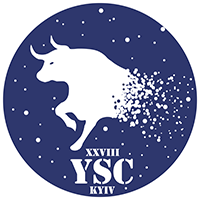Speaker
Description
We present the photometric and spectroscopic analysis of 9 W Uma type contact binaries. The studied targets are selected from the CRTS catalog. The photometric data is collected using the 1.3-m Devasthal Fast Optical Telescope (DFOT) and 1.04-m Sampurnanand Telescope (ST). We use the PHOEBE-legacy code for light curve modeling. The temperature is determined using different color-temperature relations. Due to the absence of multi-epoch radial velocity data, photometric mass ratio is used for model fitting. Archival data from SuperWASP, CRTS, ASAS-SN, Kepler and TESS is used for O-C period analysis. The linear and quadratic ephemeris are updated for all the targets. Five sources show change in orbital period which is explained on the baisis of mass-transfer between components. LAMOST low-resolution spectra is used for chromospheric activity analysis. The chromospheric flux contribution is determined by subtracting the template spectra from the contact binary spetra. Small excess emission is found in subtracted spectra. Due to the low-resolution of the used spectra, it is very hard to confirm the individual activity level of the components.

